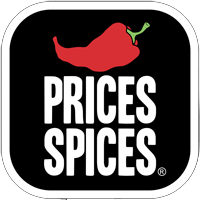 Measuring Spicy Heat
Measuring Spicy Heat
The Scoville Heat Scale, developed in 1912 by American pharmacist Wilbur Scoville, stands as the most widely used method for measuring and comparing the heat of chillies and spicy foods. This scale quantifies spiciness in Scoville Heat Units (SHU), providing a standardized way to understand and communicate the intensity of different peppers. From mild bell peppers to scorching hot Carolina Reapers, the Scoville scale offers a comprehensive framework for categorizing the vast spectrum of pepper heat.

Wilbur Scoville’s original method was surprisingly subjective. It involved diluting a pepper extract until its heat was no longer detectable by a panel of tasters. The amount of dilution required determined the pepper’s SHU rating. This process, while groundbreaking for its time, relied heavily on human perception, which could vary significantly between individuals.
In modern times, the science behind measuring Chilli heat has evolved considerably. High-performance liquid chromatography (HPLC) now provides more accurate and objective measurements. This technique detects and quantifies capsaicinoids, the chemical compounds responsible for a pepper’s heat. By using HPLC, researchers can determine precise SHU values without relying on human taste buds.
The Scoville scale spans an impressive range, from the mildest Chillies at 0 SHU to the most extreme at over 2 million SHU. This vast spectrum allows for detailed categorization of peppers and spicy foods, making it an invaluable tool for culinary professionals, gardeners, and spice enthusiasts alike. The scale’s wide adoption has not only standardized how we discuss pepper heat but has also sparked a global interest in pushing the boundaries of spiciness, leading to the development of increasingly hotter pepper varieties.

 A Rich History and Unique Flavour
A Rich History and Unique Flavour century. Known for its simple yet bold ingredients—
century. Known for its simple yet bold ingredients—










 Armed with just a rifle, salt, and a flint, he and his assistant traversed the African bushveld on horseback, relying on their hunting skills to procure sustenance from the wild. Survival also meant depending on the numerous streams and rivers for water.
Armed with just a rifle, salt, and a flint, he and his assistant traversed the African bushveld on horseback, relying on their hunting skills to procure sustenance from the wild. Survival also meant depending on the numerous streams and rivers for water.
 season
season
 Piri- Piri Chillies and the
Piri- Piri Chillies and the